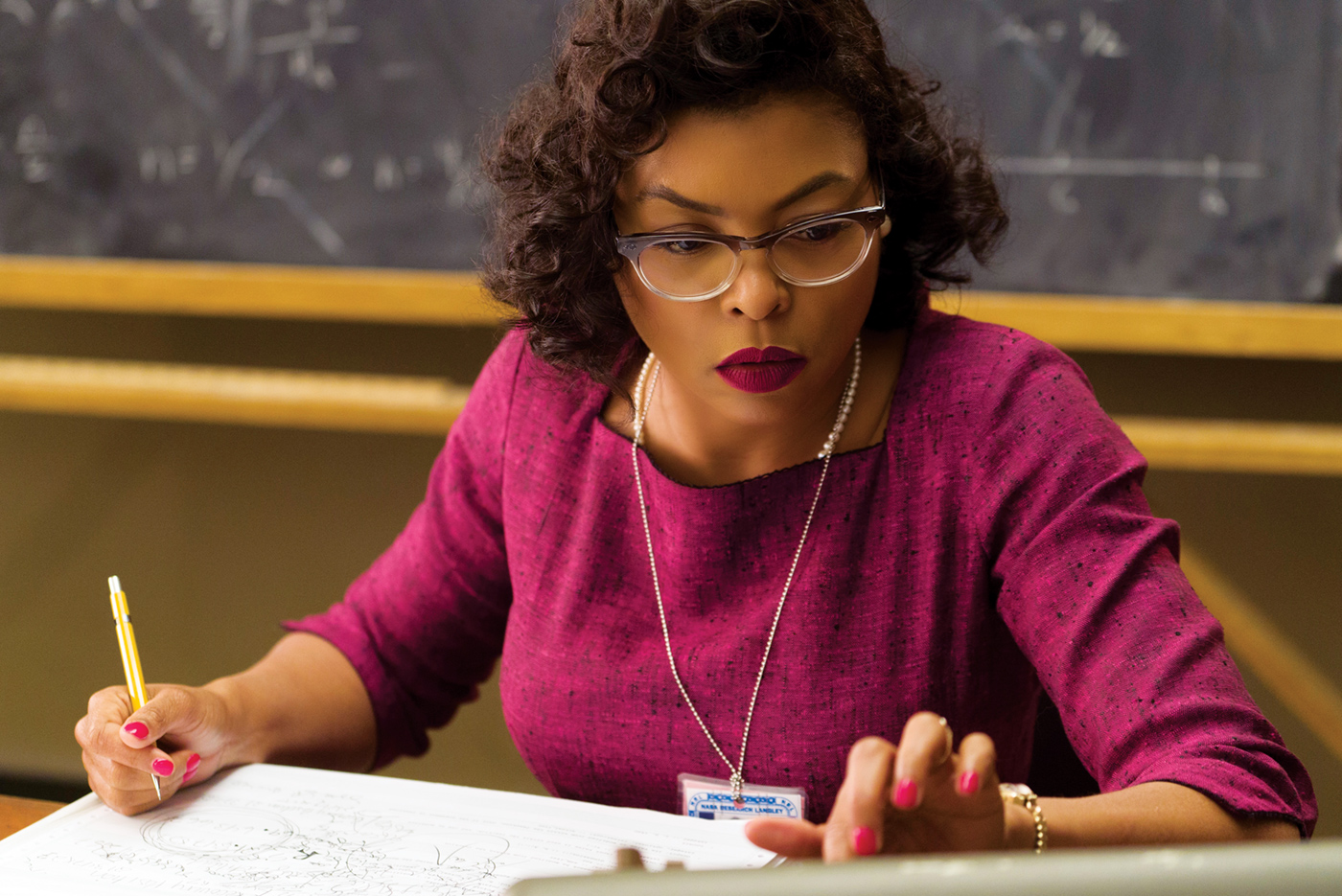Mandy Walker, ASC, ACS, helps bring the proud black women heroes behind NASA’s early space program out into the light
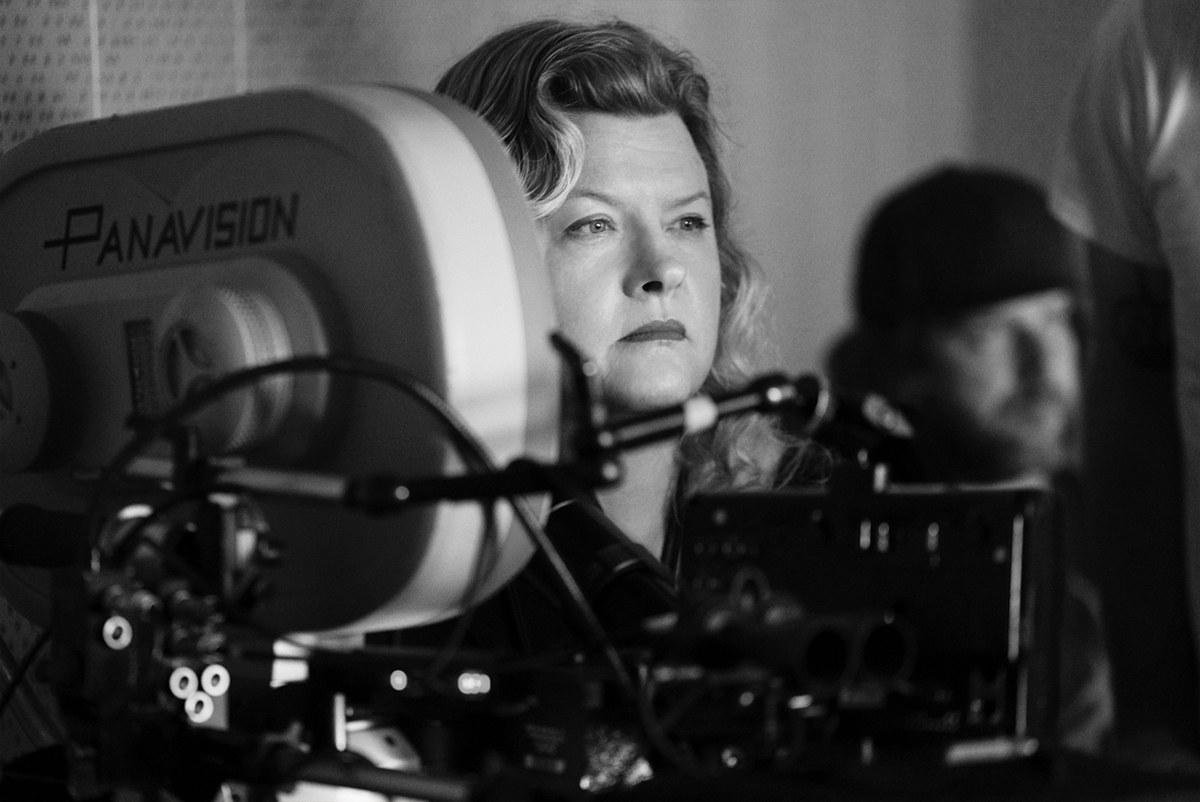
February 20, 1962. Fledgling astronaut John Glenn, dressed in his “space suit,” approaches the launch pad in Cape Canaveral, FL, about to be the first American to orbit the Earth and return home safely. But then he pauses, concerned about some lingering questions over mathematical computations generated by the first IBM computers at NASA. What does America’s first real superhero do? Glenn picks up the phone to Launch Central, and says: “Get the girl to check the numbers. If she says they are right, then it’s a go.”
The “girl” for whom Glenn asked for was Katherine Johnson, one of a handful of “human computers” (all African-American women) NASA had tucked away in a basement room to make computations with monumental consequence that drove our nation’s first journey into space. The new Fox film Hidden Figures tells the powerful true story of three of these women – Johnson (Taraji P. Henson), Mary Jackson (Janelle Monáe), and Dorothy Vaughan (Octavia Spencer) – who all navigated through the Jim Crow South to become the unsung heroes of the American Space Program.
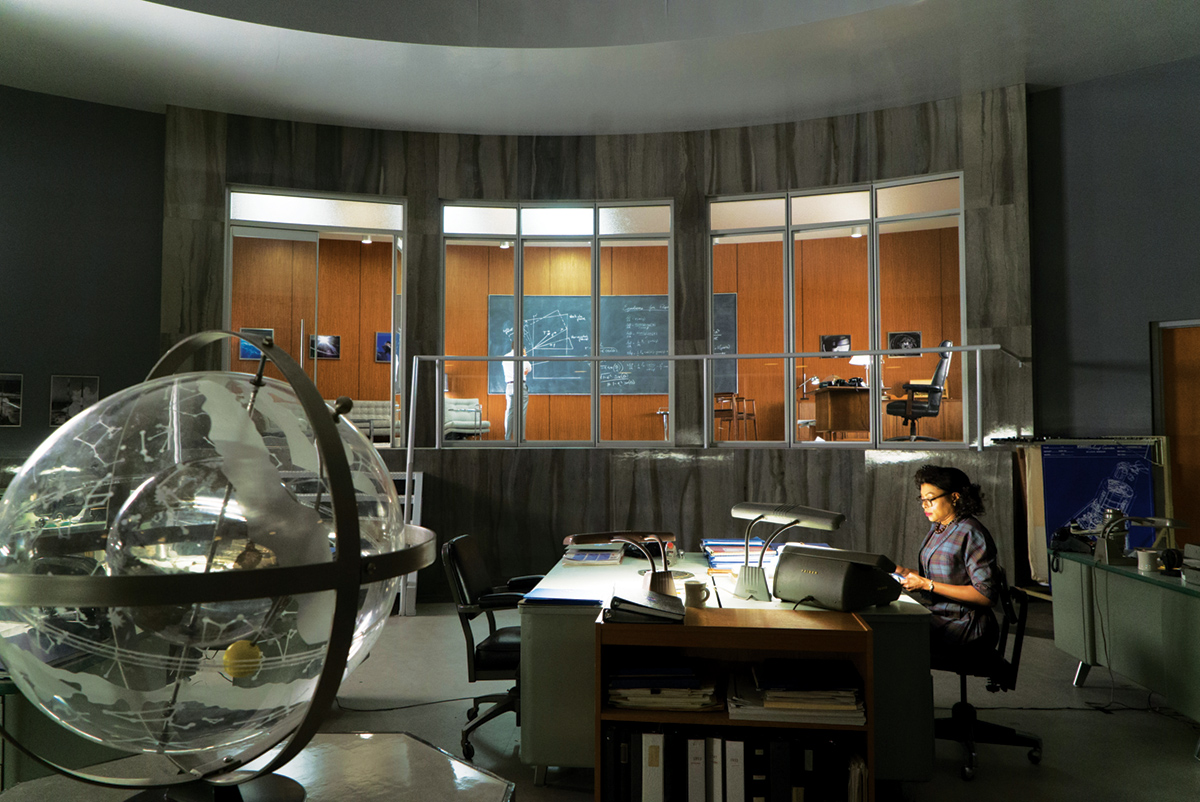
The word through is an important part of their story. Chosen by director Ted Melfi (St. Vincent), it “defines the cinematography and tone,” he explains. “Everything in the film is shot through things. Characters go through things. The story begins with the characters always behind things – a little girl [young Katherine] seen through trees as she picks up a pinecone and counts numbers, women walking through hallways or being seen through glass. Until they have gone ‘through’ everything – and come out on the other side, clean, unobstructed.”
Cinematographer Mandy Walker ASC, ACS (multiple ACS award winner and ECA winner, known for Australia), and Melfi chose to shoot on film – Kodak 100D, 250D and 500T – overexposed 2/3 of a stop – with Panavision cameras and E-series, T-series and Primo Zoom anamorphics. According to 1st AC Larry Nielson, Walker’s overall concept was straightforward camerawork. “We weren’t trying to reinvent the wheel but to allow the camera to tell the story,” Nielson states. “Not a lot of whip pans, handheld or tight close-ups. The camera movement wasn’t distracting.”
A-Camera/Steadicam Jason Ellson says Walker’s approach was to create a balanced frame that maximized the anamorphic format, and then let the action play within it.
“Movement was kept to a minimum. There were no unmotivated camera moves unless we were moving with the actors,” Ellson recalls. Most shots were on dollies, with running and dialogue scenes in corridors mainly done on Steadicam. “For dialogue scenes, to preserve the eye lines, we would swing a lens on the A-camera rather than try and force two cameras together at the same time, compromising the angles,” Ellson adds.
Echoing his director, B-camera operator Mick Froehlich says the Walker/Melfi plan was to “use strong shapes and heavy foreground elements, to look through the sets as an observer. We also used vertical lines integrated into the production design to create a frame within a frame,” he recalls.
This visual approach, although relatively simple, took intense planning. Walker recounts how she and Melfi drew from various influences. “We watched archival NASA footage and [Civil Rights Era] documentaries like Eye on the Prize, along with still photography by Saul Leiter, Gordon Parks and Danny Lyons,” she says. “Then we watched contemporary films like Paris, Texas for composition. We built what we called a ‘production bible’ of stills from our storyboards, extra location frames and angles, and written slugs that Ted would put in that described the scene in emotional and dramatic terms.”
Walker says their visual style can be traced back to those stills. “The look really resembles Kodachrome more than anything else,” she offers. “Production Designer Wynn Thomas and Costume Designer Renee Kalfus worked with us to create the color palette, texture and images. Color and saturation in lighting was carefully planned to support each location and the story of what the women were going through in each moment.”
One of the biggest challenges was re-creating NASA in Langley – seven locations strung together to make the campus. “The Space Task Group is probably the biggest location – bright and white and somewhat cold – representing, for that time, the space-age environment,” explains Walker. “Wynn built this in a gym in an abandoned school across from the Atlanta production office. The next biggest, Tracking Control, was built in a room at an old mental asylum.”
Lighting for the bullpen, the Space Task Group (STG) and Al Harrison’s (Kevin Costner’s) office (a fully constructed set) offered unique opportunities. Gaffer Chris Culliton says that “given many of the scenes in Space Task Group would be dynamic and that Wynn’s circular design lent itself to those beautiful anamorphic wide shots, it was important to have a lighting scheme that was integrated into the architecture.
“The focal point was a large ‘oculus’ that hung in the middle of the room,” he continues, “just below the datum line of the side walls. Imagine a circular frame with a 30-foot seamless bleached muslin stretched over it. The muslin was backlit by around 40 ARRI Skypanels placed at a sufficient distance to eliminate hot spots.”
However, Culliton adds, the main weakness of such broad top light is that it’s often too flat. “In a top-lit room, such as the STG, or the fluorescent-lit office spaces, you have to introduce contrast to give the space a sense of depth,” he observes. “Lighting is often more a question of creating shadow and separation by switching off fixtures, or using negative fill, to focus the eye on what matters in the story. We worked closely with the Art Department to find desk lamps and practicals that would give hits of hard, warm light at the camera level, in order to add another layer or dimension.”
One of the most stunning moments in Hidden Figures takes place in the STG and Tracking Control room. “Katherine is the first black woman to come out of the basement and be invited to work in NASA’s technical world, which is all [white] men,” explains Walker. “So these women’s struggles are never more telling than right here.”
The technicians not only refuse to share their coffee machine, but the numbers she checks have been redacted, limiting her chances for accuracy. On top of that, there is no “colored women’s bathroom” in the building, so she must run half a mile (sometimes through the rain) to use the “colored” facility, further fueling Harrison’s rage when he needs her.
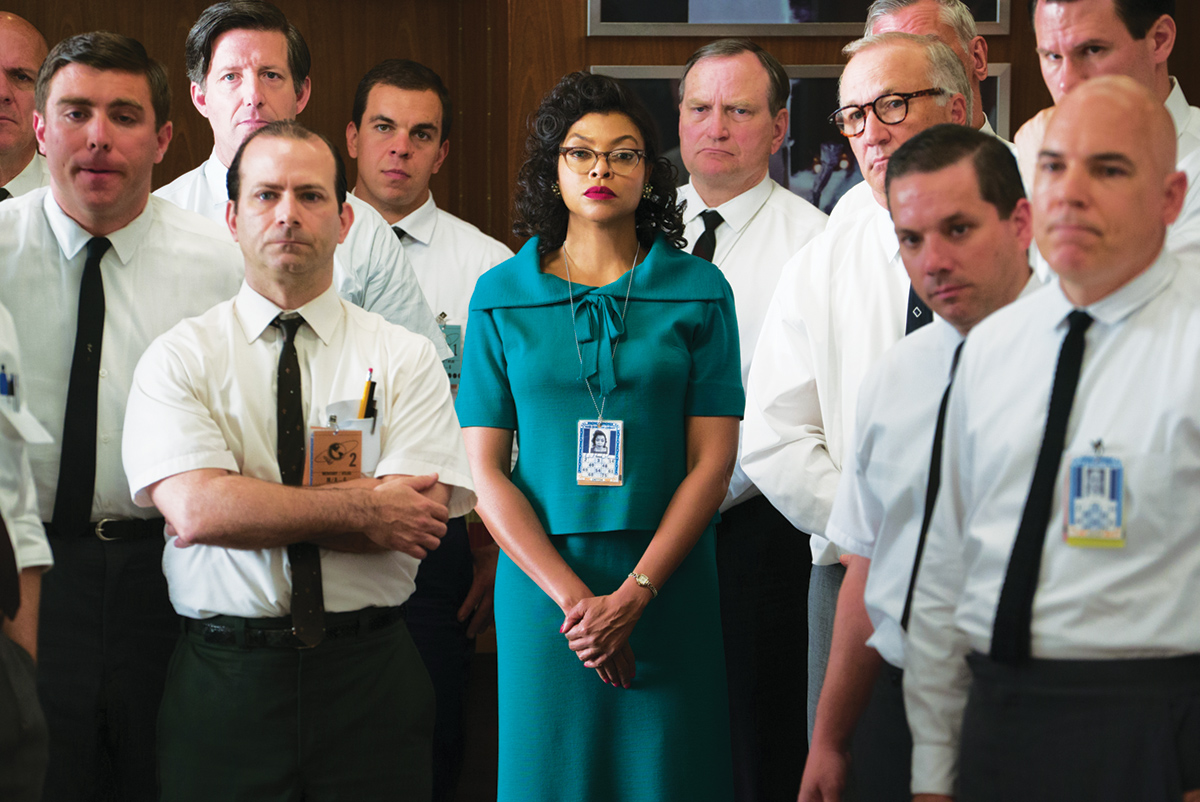
As Walker describes the key scene: “We wanted to make Katherine a jewel in a sea of white men, in white shirts, in a gray room. We made sure she popped with her colored outfits and bright red lipstick” [even brighter than Walker’s trademark, if that’s possible].
“We had discussed an idea that early on in the movie’s story line,” Ellson adds, “we would shoot our three leads slightly below eye level when interacting with Caucasians. The idea was to subtly create the feeling that the white people looked down on these ladies. As the movie progresses, the women become more empowered and we raise the camera higher to subconsciously create the visual to the viewer that everyone is equal.”
Froehlich says he and Ellson were always looking for ways to work together to shoot through different set pieces and to support the visual clues.
“One of my favorite shots,” Froehlich remembers, “is in Kevin Costner’s office,” during one such crisis moment. “We start on Kevin sitting in his chair from behind with his lunch, and then he walks out to call Katherine into his office. She is looking through his windows observing him for a few moments before he decides what to do.”
There are many more similar “moments” that, when pieced together, form Walker’s heart-rending visual tapestry. Like when Mary Jackson challenges a Jim Crow judge to let her attend night school, so that she can become the first woman engineer (which she did).
Or when Johnson, the unacknowledged mathematical genius behind NASA’s computations, runs to the Track Control Room with the correct figures, only to have the door slammed in her face after she hands the pages through it. The emotional ante is raised by a tight CU profile of Henson that ends in complete shadow.
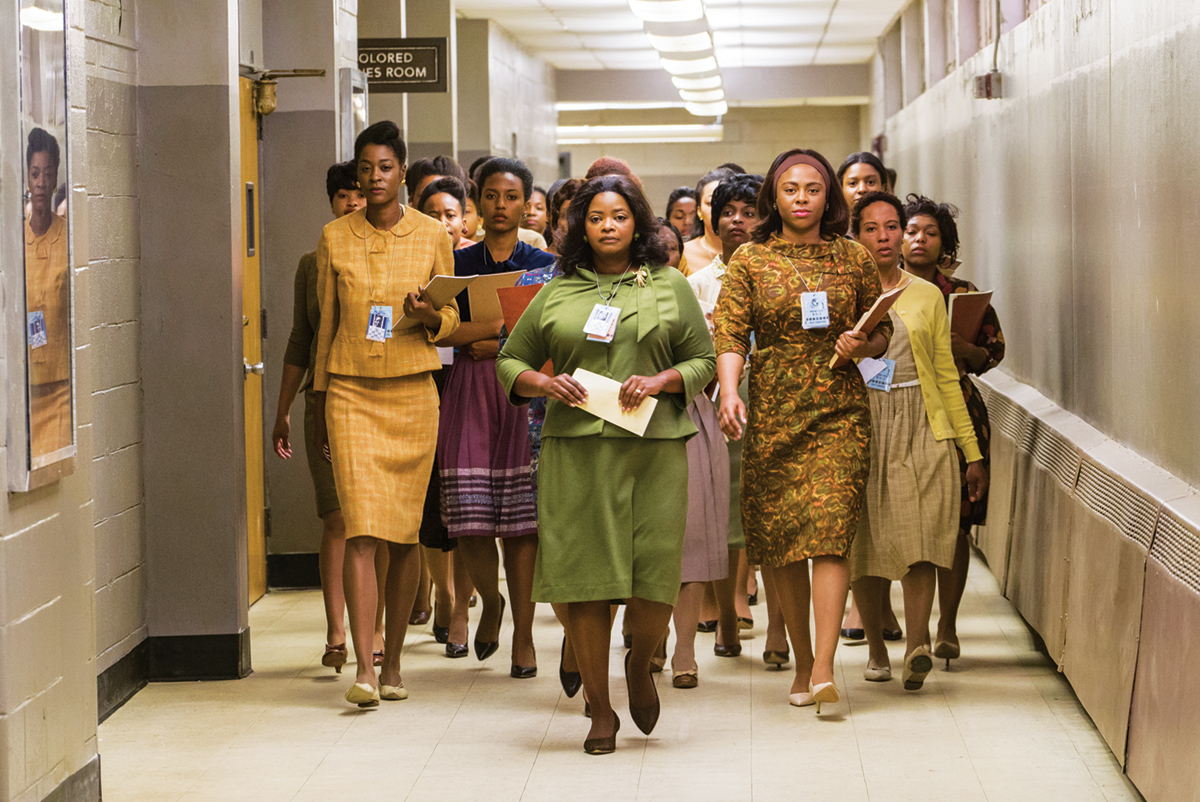
Speaking of shadows, everyone from Executive Producer Mimi Valdés to the entire Local 600 camera team singles out the moment when the three women come out of the shadows and into the light. The scene focuses on Dorothy Vaughn, who has quietly trained herself and her flock of human computers to work on IBM machines. When the supervisor, Vivian Michael (Kirsten Dunst) offers Vaughan a chance to become a supervisor, i.e., to train the men or white women on the system, Dorothy only agrees if she can bring along her trained black colleagues.
“It’s my favorite scene,” says Valdés. “Dorothy informs the colored computers they’ve been reassigned, and they march down the hallway like superheroes. The way Mandy chose to shoot [the scene], you can’t help but cheer these women on. It’s one of the most brilliant examples of female empowerment we’ve ever seen in cinema.”
The moment is transformative.
Dorothy leads her peers out of their dingy basement offices (with no windows), and up the stairs from outside (in dark silhouette), through the glass doors and into the brightly lit hallway. Ellson says Walker found a Gordon Parks photograph – a high angle of a group of nuns walking in a large group with one leading – that was used as a reference. “We mounted the Steadicam to the dolly,” Ellson recounts, “using a riser to get as high as possible – almost scraping the fluorescent ceiling fixtures. I kind of wrapped myself around the boom arm like a koala,” he laughs, “as dolly grip Jeff ‘Moose’ Howery pulled the dolly backward down the hall, preceding the women.”
Walker and her team also expertly blended flashbacks and archival footage. One of the most impactful is an introduction to young Katherine, a mathematic savant, as she counts with a pinecone in her hand. “She’s nine years old,” the DP relates. “We shot it in Super 16 millimeter with a 2.40:1 extraction from the full frame, so it became quite grainy. Then in our DI we stripped most of the color out and added a sepia look to the images.”
Another unique shot was reminiscent of the 1956 Judy Holiday film Solid Gold Cadillac, in which the two main characters exit their company’s building in black and white and immediately turn into color as they enter their solid-gold Cadillac. In this case, it is archival footage of the NASA capsule blended into the astronaut’s training room that was color corrected in post to transition from that footage to the film’s 35-mm footage.
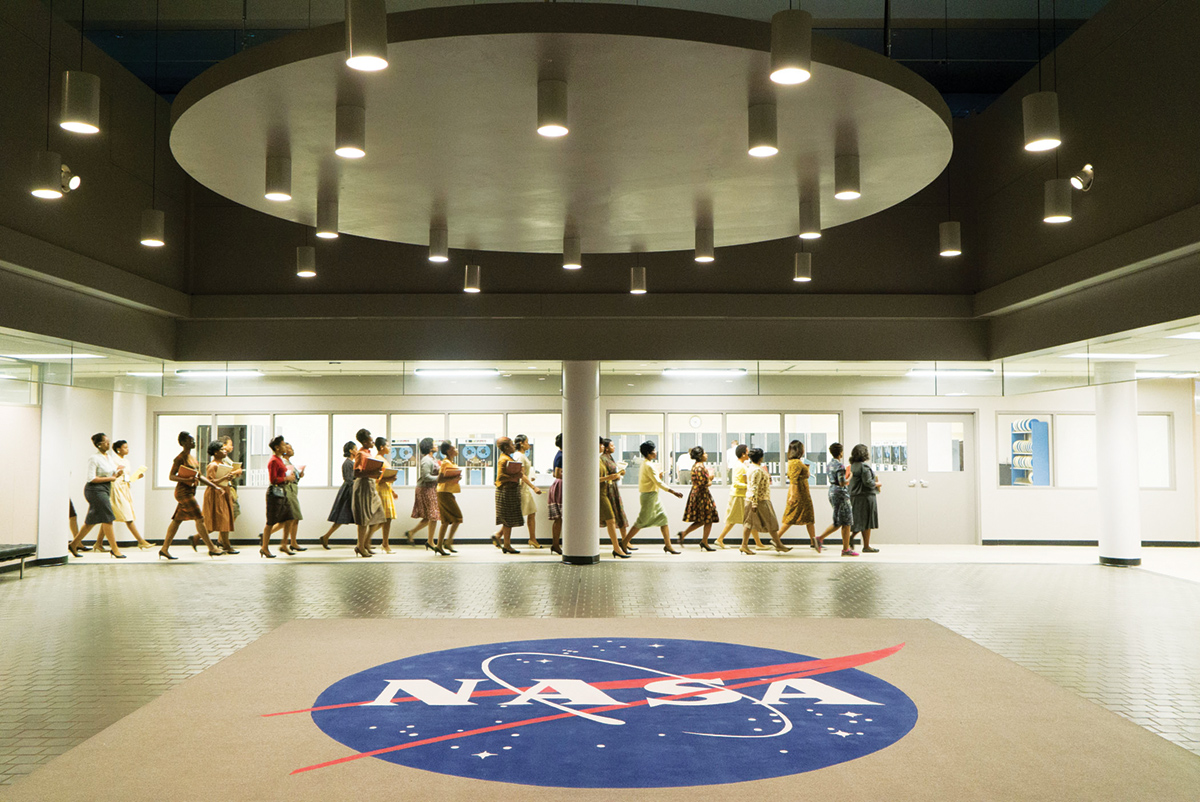
Archival footage (and locations) lent an added reality to Hidden Figures, such as when the production shot in a place that mirrored the fabled wind tunnel NASA used to train their astronauts. Walker says they found a functioning wind tunnel near their Atlanta base, at the facility of aerospace giant Lockheed Martin. Prepping the scene mirrored a similar moment in the movie, when a massive plastic-wrapped IBM machine is too big to fit through the doors of the new computer room.
“A 24-foot crane, two full camera packages, dollies and lights,” Walker recalls, “all had to come up in a lift over two days and enter a small door that was all of five feet, and then squeeze through the wind flutes to the large tunnel.”
Culliton remembers the wind tunnel as both curse and blessing. “Visually, it was stunning, but it was a logistical nightmare,” he says. “It was a 60-foot metal tube with a massive wind turbine in the background. There was no lighting in the tunnel at all except for a few glass windows that were blacked out. The only way to light the scene around the Capsule was to place practicals with some scientific verisimilitude.
“There are a series of rather scientific looking open face lights around the capsule that we made by resurrecting some old Mole Richardson Scoop Lights; they have a beautiful bell housing and an oversized tungsten bulb,” Culliton adds. “Along with some floor based MR16 cyc lights, softened with 216 and CTO, we tried to achieve a clinical or pragmatic look to the practicals while retaining warmth and, hopefully, a sense of intrigue. In the background we placed an Arri T12 behind the actual fan; it created a dramatic background for silhouettes and added a sense of drama, especially as the fan blades created an undulating pattern of shadow and light along the surface of the tunnel.”
And when Mary Jackson, in period dress and high heels, gets caught in the grating as the “wind” starts blowing, Froehlich says the scene came alive. “The big fan and Chris’s incorporation of practicals and movie lighting inspired me to look for moments,” he adds.
No doubt such visuals will be the audience’s main takeaway from Hidden Figures, which reveals some of American history’s most inspiring and (until now) unseen moments. Oscar nominee (and Golden Globe winner) Taraji P. Henson speaks for the entire production team regarding the social importance of the project.
“I couldn’t be more proud to bring the story of Katherine Johnson to the attention of the world,” she says. “Our team was blessed to have the artistry of cinematographer Mandy Walker. A woman behind the camera, to help guide and shape the story of the brilliant women ‘computers’ of NASA, was a perfect addition to our creative team [who were all mostly women].
“I had the most rewarding and ‘wet’ scene in the movie that we describe as ‘running’ [when Johnson must race to and from the ‘colored’ bathroom above]. And Mandy ran along with me – over and over. [Walker] and our director, Ted Melfi, brought the Sixties to life. I know the audience will see Mandy’s hidden eyes behind the hidden figures.”
by Pauline Rogers
photos by Hopper Stone/SMPSP
CREW
Director of Photography
Mandy Walker, ASC, ACS
A-Camera Operator
Jason Ellson
A-Camera 1st AC
Larry Nielsen
A-Camera 2nd AC
Matt Jackson
B-Camera Operator
Mick Froehlich
B-Camera 1st AC
Tony Rivetti
B-Camera 2nd AC
Marc Casey
Loader
Austin Swenson
Unit Still
Hopper Stone/SMPSP
Unit Publicist
Deborah Simmrin
